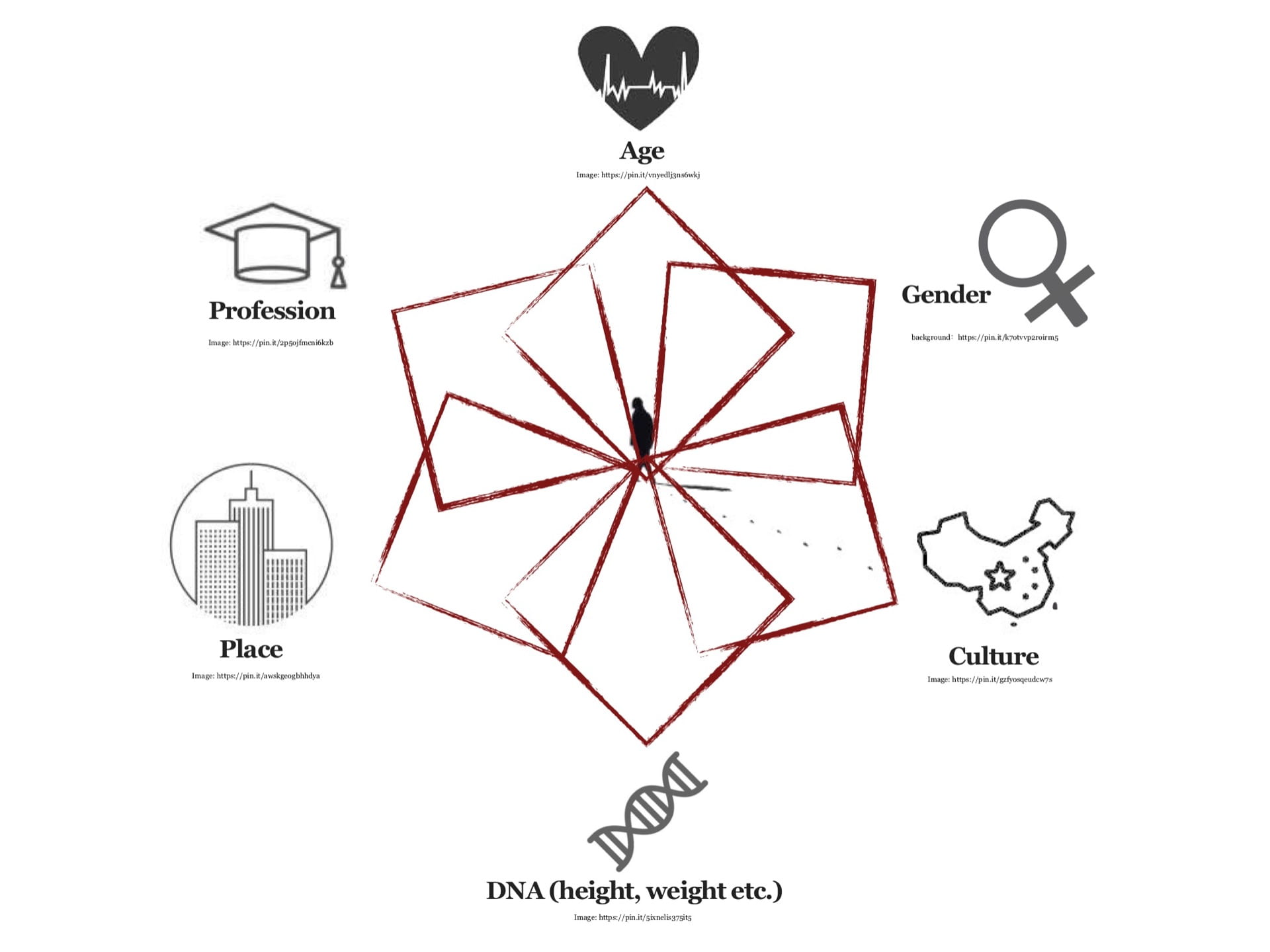In order to discuss intersectionality, it is important to first understand what intersectionality means in the concept of identifying subjectivity (some may associate subjectivity with identity but some may not) of one’s self. Although the term ‘intersectionality’ was made aware to the academic world mostly by Kimberlé Crenshaw as a critique for discrimination[1], particularly for understanding certain oppressed groups such as black women whom she viewed could not be fitted solely under either existing antiracist or feminist theory; ‘intersectionality’ does not limit itself to any civil rights movement or any -ism theories. From an article published by THE CUT, a 2014 review in the Washington Post defines ‘intersectionality’ – in my opinion being comprehensive and true to the word itself – as a term that “seeks to describe how identity is conditioned, not by one reductive quality, but by multiple tastes, impulses, desires, and fears.”[2]However, my explanation of the word is even simpler: one’s identity is shaped by influences from environment sectors such as society, culture, geography, and from one’s physical self (ie. Body, age, gender etc.).
To illustrate my subject position, I have chosen gender, age, culture, profession, place, and DNA (ie. Body features) as the six intersecting sectors. These subject positions greatly influence my everyday dress practice, subconsciously effect my decision making.
Putting on makeup is one of the most important practice I do to my body every day if I need to go out. Being a 20-year-old young female is perhaps one of the reasons why I have and keep this practice, but after thinking carefully, cultural influence is what makes makeup into a habitus of my life. If I were to study in Chinese schools, makeup would be forbidden by colleges and thus it would never become one of my dress practices. However, due to my experience of studying abroad since 9thgrade in Canada, the peer group introduced the makeup practice and without makeup, ones’ readiness for the day would be questioned – though in a respectful way – as he or she may have woke up late and ran out of time. Under the influence of this hegemonic thought, putting makeup on make me feel enhanced and confident when facing my body in the mirror and year after years this ritual experience transformed the action into an indispensable habitus for me.
Another important practice is to wear bra or some sort of covering supporters (pasties or silicon nude bra) before I put on any top. This dress practice not only indicate my realization and recognition of my female gender, but the practice itself is formed through the changing of my age and the growth of my body (features assigned by DNA at birth). When I was a child I do not need this dress practice as my chest was flat. But as I reached puberty and also because the DNA inhabit n my body does not lead to a flat cup, I develop the need and desire to wear bra. The importance of wearing a pair of bra under clothes is also a cultural norm shaped by the Chinese society which I grew up in. As it is viewed as inappropriate for any woman to have their nipples visible under a top when she is in public.
In terms of choosing the specific clothes for the day, the type of style I go for eventually is influenced by the type of class I have, which is located in the profession sector of my subject position. Although I personally favor clothes with asymmetrical cut, unique tailoring with dramatic or contrasting volume, shapes of body silhouette, my emphasize is on achieving style and convenient at the same time. For example, if I have creative technical studio class and would need to use sewing machine, I would not pick any clothes with big sleeves or cold and drop shoulders that might lower my work efficiency. However, I would definitely go for pants that will make up for the style I want. In addition to the style influences, what I carried daily is also influenced by my profession or in another way, by the place of where I live in right now which is NYC. There are two cards that are always present in my bag, whether I am carrying a tote or just a wallet – my student card indicating I am a current student at Parsons the New School in New York City and my Metro card in order for me to use the underground train for the daily commute. It is important to notice that dress practice are not limit to ‘dress’ as an object but also the subjects that we used as supplements to carry around with our body. In order to live in New York and to enter my school successfully for class on weekdays and for homework on weekends, these two supplements – student card and metro card – also become part of my necessary dress practice.
But are profession and place the only two subject position involved for this practice? Certainly not. If I were not 20 years old, I would not be in college and would not have the necessity to carry a college student card, nor have I the opportunity to make metro card part of my body supplement. Thus, the many subject positions are intersecting and are also influencing one another on a deeper level, and is never possible to talk about any one of them without mentioning the other positions when considering someone’s subjectivity.
[1]Kory Stamper, “A Brief, Convoluted History of the Word ‘Intersectionality’,” The Cut. https://www.thecut.com/2018/03/a-brief-convoluted-history-of-the-word-intersectionality.html.
[2]Ibid.
Bibliography:
Stamper, Kory. “A Brief, Convoluted History of the Word ‘Intersectionality’.” The Cut. The Cut, March 9, 2018. https://www.thecut.com/2018/03/a-brief-convoluted-history-of-the-word-intersectionality.html.





